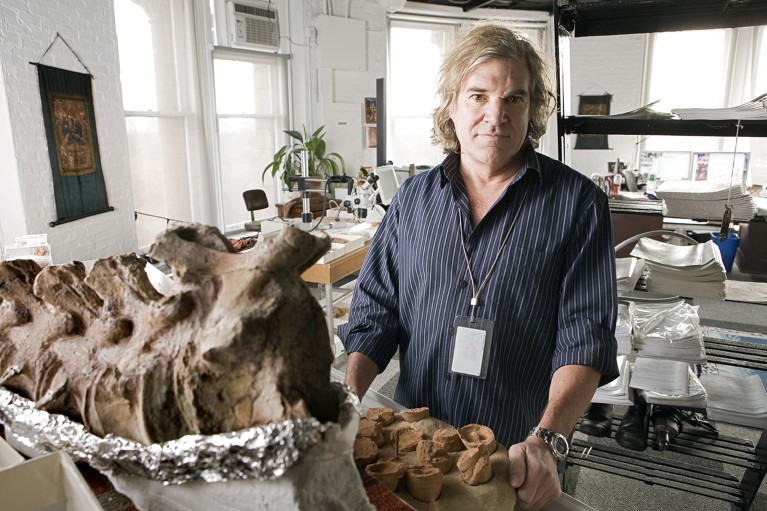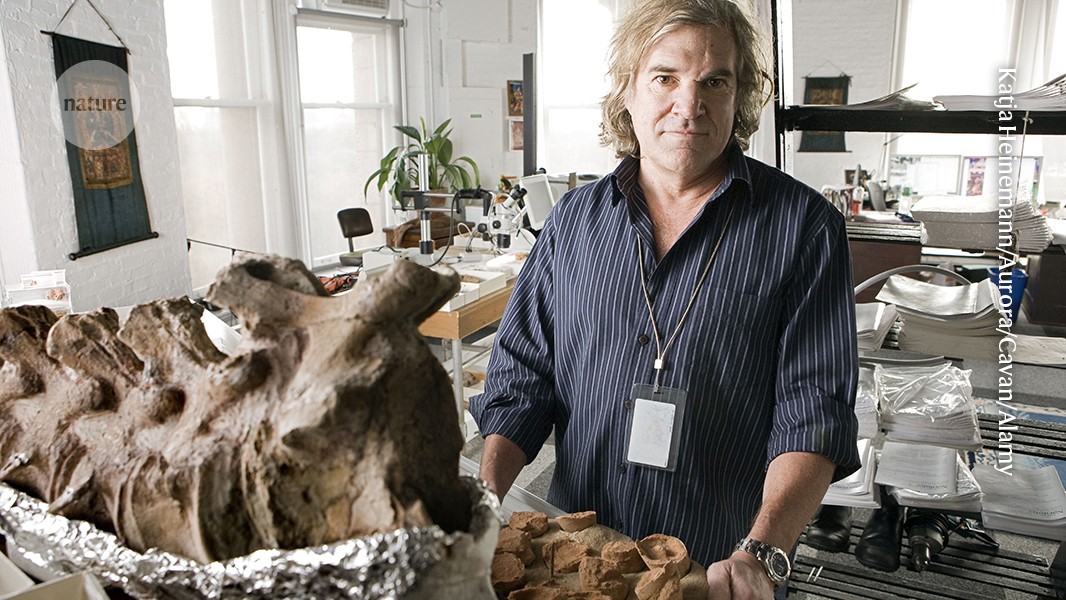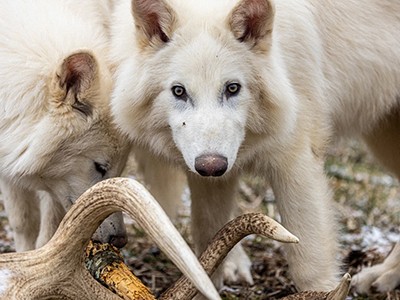
Credit: Katja Heinemann/Aurora/Cavan/Alamy
Mark Norell, whose discoveries helped to demonstrate that birds are living dinosaurs, has died aged 68. As a curator at the American Museum of Natural History in New York City, Norell combined fieldwork, cutting-edge analysis and a gift for collaboration, transforming how scientists and the public see dinosaurs.
Norell and his colleagues showed that birds belong to the group of carnivorous dinosaurs known as theropods, which also include Velociraptor and Tyrannosaurus. He advanced evolutionary methods and proposed, for example, that estimates of a fossil’s age could be improved by also accounting for the age of the species’ nearest relative. The approach uses ‘ghost lineages’ by recognizing that the existence of lineages can be inferred on the basis of their relationships even when they leave no trace in the fossil record. This method has become adopted widely in palaeontology. Norell and his research teams also pioneered the use of imaging and chemical techniques to probe fossil anatomy, including brains and feathers. His work revealed details of dinosaur growth, reproduction and behaviour, and helped to establish that feathers are an evolutionary innovation that long pre-dated flight.
This company claimed to ‘de-extinct’ dire wolves. Then the fighting started
Born in Saint Paul, Minnesota, and raised in southern California, Norell developed a love of exploration as a teenager scouring deserts, mountains and coastal cliffs for fossils. After studying at California State University in Long Beach, he earned a master’s degree in 1983 at San Diego State University in California, for his study of fossil lizards. He moved to Yale University in New Haven, Connecticut, for his PhD on the evolution of fossil alligator-like forms.
He joined the American Museum of Natural History in 1989, gaining access to one of the world’s most celebrated dinosaur collections, including the discoveries made during the museum’s expeditions to the Gobi Desert in Mongolia between 1922 and 1930. When Mongolia reopened to Western scientists in 1990, months before the official collapse of the Soviet Union in 1991, the museum launched the first of many Gobi expeditions in collaboration with the Mongolian Academy of Sciences in Ulaanbaatar. Norell and I served as the expeditions’ co-leaders for more than 30 years.
In 1993, the team discovered a previously unknown and extremely rich fossil site, Ukhaa Tolgod, where Norell unearthed the first articulated skeleton of a dinosaur embryo preserved inside an egg. The day after that discovery, he found an adult oviraptorid dinosaur that was buried and preserved while crouched over its clutch of some 20 eggs. The eggs were arranged meticulously in a pattern that was consistent with other nests found at the site. Norell’s discovery offered the first evidence of bird-like brooding behaviour in dinosaurs.



